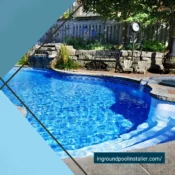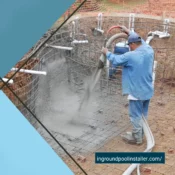Excavation Tips for a Seamless Inground Pool Installation

Excavation Tips for a Seamless Inground Pool Installation
Installing an inground pool is an exciting way to enhance your outdoor space, but the process begins with one of the most critical and challenging steps – excavation. A smooth excavation sets the foundation for a flawless pool installation, while any errors can lead to costly delays and adjustments. By following the right strategies and preparing in advance, homeowners can ensure the excavation phase runs seamlessly.
1. Start with a Solid Plan
Proper planning is key to successful excavation. Before any digging begins, work with a professional pool contractor to design the layout and determine the exact location and dimensions of your pool. This ensures that excavation aligns with the final design, avoiding unnecessary adjustments.
- Tip: Consider sun exposure, proximity to the house, and existing landscaping when choosing the pool’s location. Avoid areas with heavy tree coverage or significant slopes.
2. Obtain Permits and Inspections
Most municipalities require permits for inground pool installations, including the excavation phase. These permits ensure that the project complies with zoning laws and safety regulations. Failing to secure the proper permits can lead to fines or project halts.
- Pro Tip: Schedule all required inspections at key points in the excavation to ensure you remain compliant and avoid delays.
3. Mark Utility Lines
Hitting underground utility lines during excavation can lead to dangerous situations and expensive repairs. Before digging, contact your local utility companies to mark gas, water, and electrical lines.
- Checklist:
- Call 811 to request a utility line marking.
- Mark the excavation zone clearly to ensure a safe digging area.
4. Prepare the Site
Clear the pool area of debris, rocks, and vegetation. Ensure the site is level and free of obstructions. Mark the pool's shape using stakes and string, providing a clear guide for the excavation crew.
- Example: Homeowners with uneven terrain may need additional grading or soil removal to create a level base for the pool.
5. Use the Right Equipment
Excavation requires heavy machinery such as backhoes or excavators. Professional pool contractors have the necessary tools and experience to handle these machines safely and efficiently. DIY excavation is not recommended, as improper digging can lead to uneven pool bases or structural issues.
- Tip: Hire experienced contractors who specialize in inground pool installations to avoid costly mistakes.
6. Account for Soil Conditions
Different types of soil can affect the excavation process. Sandy or loose soil may require additional support to prevent cave-ins, while rocky terrain may take longer to dig. Conduct a soil test beforehand to anticipate challenges and adjust plans accordingly.
- Solution: In areas with difficult soil conditions, consider using retaining walls or additional reinforcement during pool construction.
7. Ensure Proper Drainage
Poor drainage around the excavation site can lead to flooding and structural instability. Install temporary drainage solutions to redirect water away from the pool area during excavation.
- Pro Tip: Add a sump pump or drainage system to manage water buildup, especially during the rainy season.
A successful inground pool installation starts with careful and precise excavation. By planning ahead, securing permits, marking utilities, and hiring experienced professionals, homeowners can ensure a seamless excavation process. With the right preparation, your dream pool can become a reality without unexpected setbacks. Ready to start your project? Take these steps to heart and set the stage for a smooth and efficient installation.
All Categories
- Concrete
- Concrete
- Concrete pools
- Construction
- Custom Features and Add-ons
- Design
- Design
- Design
- Design & Construction
- Design and Planning
- Features & Customization
- Infinity edge
- inground pool
- inground pool builder
- inground pool installer
- Installation
- Installation Process
- Legal & Administrative
- Materials
- planning and design
- Pool Aesthetics and Customization
- Pool Design
- Pool Equipment
- Pool Features
- Pool Features
- Pool Installation Process
- Pool Materials
- Pool Materials
- Pool Types
- Project Planning
- Renovation
- Resurfacing
- top sights
- Types of Inground Pools
- Types of Inground Pools
- Types of Inground Pools
- Types of Inground Pools
- Water Treatment



